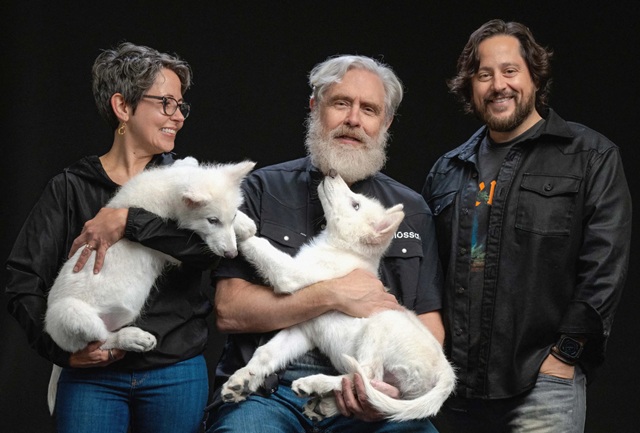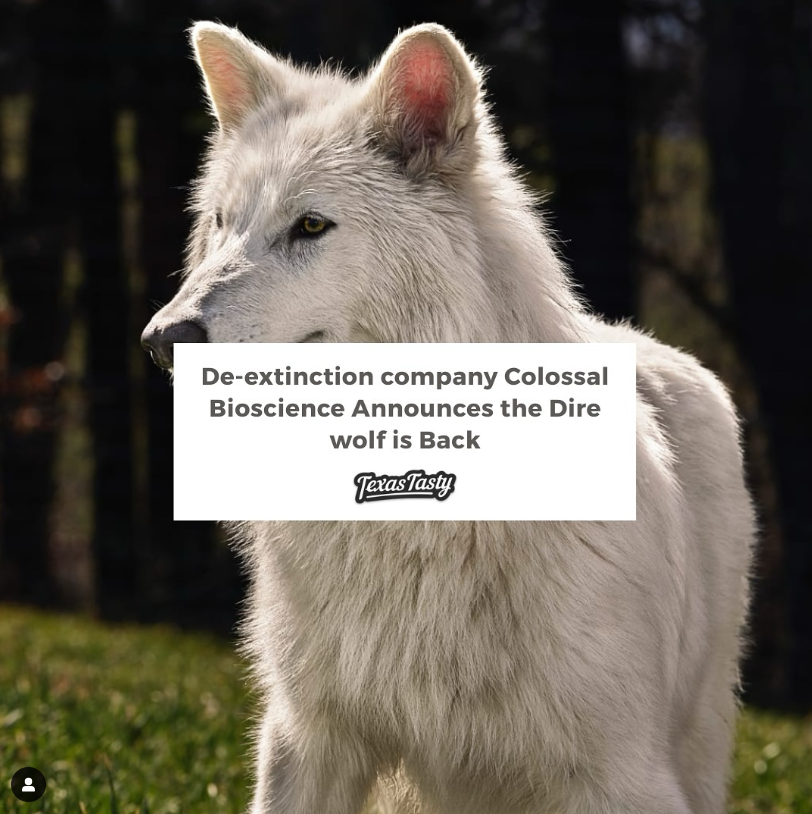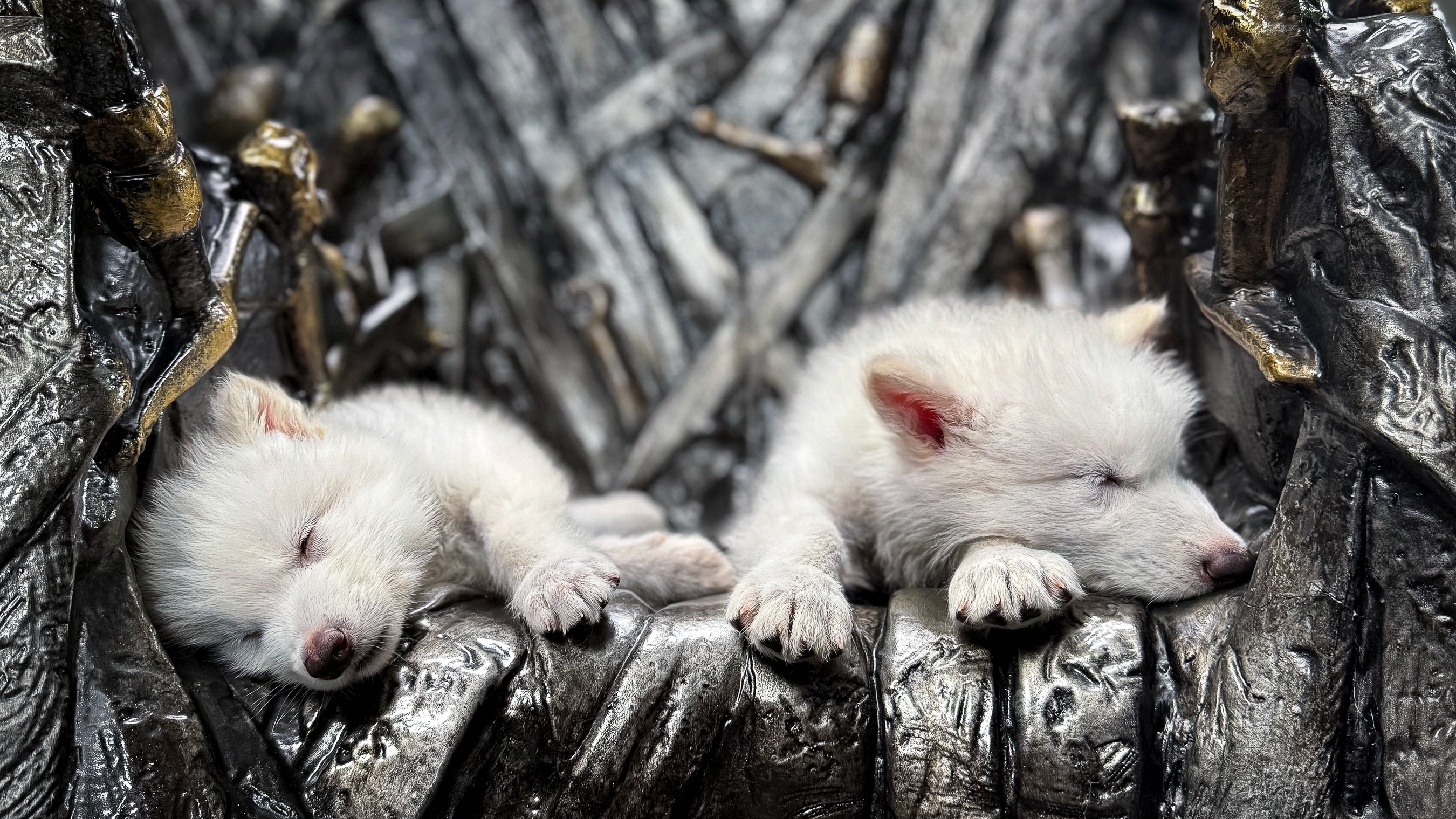The announcement made by Ben Lamm, CEO of Colossal Biosciences, on April 7 from his X account "Excited to announce @colossal has brought back the dire wolf." thrilled the whole world. TIME magazine made this event as a cover story and promoted it as the beginning of the era of De-extinction.
Announcing the success of one of its ambitious projects, Colossal Biosciences informed the whole world that they have succeeded in reviving the species of Dire Wolf that had become extinct about 12000 years ago. They also presented some videos and photos through their social media accounts and to media in which they displayed three Dire Wolf pups.
Two male pups Romulus and Remus are 6 months old and a female pup Khaleesi is 4 months old.

For some people, this discovery is a big event, but also raised some contradictions from the scientific world. But still this has become the most sensational event of this year in the world of science.
Know about “Colossal Biosciences”
Colossal Biosciences Incorporation is an American biotechnology and genetic engineering company founded in 2021 by George Church, an American biologist, and Ben Lamm, an American serial entrepreneur and billionaire. The company develops genetic engineering and breeding technologies for conservation biology.

The company is working on an ambitious project to de-extinct several extinct animals, including the woolly mammoth, Tasmanian tiger, northern white rhinoceros, dire wolf, and dodo, by 2022. Colossal Biosciences has a long list of species that they want to revive and make them part of our ecosystem again. This list includes Castoroids, Arctodus and Steller's sea cow. Ben Lam once said that his company wants to revive Steller's sea cow, but there is no living close relative of this species currently alive, so the main problem is that no species can be used as a surrogate mother. So they are working on developing an artificial uterus. Apart from this, Colossal has also done genetic research on these species Irish elk, great auk, bluebuck, ground sloth, moa, saber-toothed cats, long-horned bison, Columbian mammoth, cave hyena, mastodon, American cheetah and woolly rhinoceros. The company claims to revive many more extinct species in the future.
In 2022, Colossal was listed as one of the World Economic Forum's Technology Pioneers and was named Genomics Innovation of the Year by the Biotech Breakthrough Awards. Colossal was included in Time's list of the 100 Most Influential Companies of 2023. Colossal was named one of the best places to work in Dallas, Texas, U.S. by BuiltIn in 2025.
Colossal Biosciences claims about Romulus, Remus and Khaleesi

Colossal Biosciences has shown the world three puppies, claiming to have resurrected the Dire Wolf that died 12,000 years ago. Two of these are 6-month-old male puppies Romulus and Remus and one is 4-month-old male pup Khaleesi. Male pup name inspired by the Roman mythical characters Romulus, Remus the sons of Rhea Silvia and the god Mars and consider in Roman mythology as the founder of Great Rome city. And female pup name Khaleesi is inspired by the beautiful and lead female character of “Game of Throne” a block buster drama series.
According to Colossal’s claim, it took two DNA samples from a 13,000-year-old tooth and a 72,000-year-old ear bone of the Dire Wolf and studied them in detail. After detailed comparison of these DNA samples with the DNA of the Gray wolf, the special genes that make the Dire Wolf different and special from the Gray wolf were identified. The Gray wolf is currently the closest living relative species of the Dire wolf and 99.5% identical to the dire wolf genomes.
Scientists isolated EPC cells from Gray wolf blood samples and rewrote 14 gene heads responsible for the expression of 20 special dire wolf traits, resulting in the formation of the Dire wolf phenotype.
In this process, Colossal's scientists prepared 45 genetically engineered ova, and implanted them in the womb of two surrogate hound mixes. Which led to the formation of embryos. Colossal claims that these genetic modifications made by them in the cells of the Gray wolf have created the genetic code of the Dire wolf. And after this they have succeeded to reviving the Dire wolf.
This work is completely different from the normal cloning process. It is clear from Colossal's claim that these puppies are not born from the original Dire wolf genome, but the genome for the Dire wolf has been prepared by changing the genome of the Gray wolf using DNA recombination technology. For this, they have not even spliced the ancient Dire wolf DNA codons in the gray wolf DNA.
For this work, George Church and his team have used the CRISPR DNA editing technique. George Church has also been associated with the team of scientists who discovered CRISPR Case 9, a genome editing tool.
Know About Dire Wolf
Dire wolf is an extinct species of canine. It lived on the American continent from about 125,000 years ago to 12000 years ago in the Late Pleistocene era. Its fossils were first found in the Ohio River near Evansville, Indiana. It was named in 1858.
Studies have shown that it was slightly larger in size than its most closely living relative species, the Grey Wolf. Its weight would have been about 60 to 68 kilograms. But its canine teeth were stronger and larger. Which were the largest in any known Canis species. Due to which its bite force was also the highest. Which made it a very dangerous hunter. Its legs and body were more muscular which made it strong. Its body fur was completely white. It mostly hunted western horses, dwarf pronghorn, ground sloths, ancient bison, and camels.
They lived on earth till about 10,000 years ago but then became extinct in the Quaternary extinction event. There could be many reasons for their extinction. They may have become extinct due to hunting by other predators or lack of their food prey or inability to adapt to environmental changes.
Contradiction about Colossal discovery
As soon as Colossal Biosciences claimed this revolutionary discovery, a period of hope and criticism also started with their claim. Zoologist Philip Seddon from the University of Otago in New Zealand criticized it by calling these pups "genetically modified grey wolves".
Paleogeneticist Dr Nic Rawlence, University of Otago, said in a statement that ancient dire wolf DNA was extracted from fossil remains. These specimens are biologically too fragile and damaged to be copied or cloned.
Dr Rawlence told BBC News. "Ancient DNA is like if you put fresh DNA in a 500 degree oven overnight. It comes out fragmented - like shards and dust. You can reconstruct [it], but it's not good enough to do anything else with. the de-extinction team used new synthetic biology technology using the ancient DNA to identify key segments of code that they could edit into the biological blueprint of a living animal, in this case a grey wolf. So what Colossal has produced is a grey wolf, but it has some dire wolf-like characteristics, like a larger skull and white fur.” Dr Rawlence termed it as a hybrid.
Julie Meachen, a paleontologist at Des Moines University, told ABC News in an interview "I was impressed, but did not consider the pups to be dire wolves. What we had was something new — we have a mostly gray wolf that looks like a dire wolf."
Most of the scientists who criticized say that just by making 14 changes in the genotype of the grey wolf, it will not become the genotype of the dire wolf. Rather, it will be a genetically modified grey wolf genotype.
Many thinkers are criticizing the justification and moral of this discovery. At the same time, many scientists and environmentalists believe that establishing many extinct species in the current environment can also create ecological imbalance.
Many philosophers are also expressing their concern about the future risks of making such special changes in organisms through genetic engineering. However, Colossal Biosciences is also constantly answering these criticisms and questions through its statements.
Colossal Biosciences aspirations with the future of Genetic Engineering
In a post on Ben Lamm's Insta profile, a picture of Dire Wolf has been shared with a message on that picture which says De-Extinction Company Colossal Biosciences. It is clear from this that Ben Lamm is very excited about the long list of creatures that Colossal Biosciences has prepared to resurrect. And his company has direct financial benefits from this as well. Apart from this,
Colossal Biosciences also develops vaccines and with the success of these projects, its credibility will also increase. Colossal Biosciences is excited to move forward by opening up new possibilities in the field of genetic engineering. Because this is the first instance of such successful use of genetic engineering in animals and there are great possibilities of the uses of genetic engineering in the medical field.


